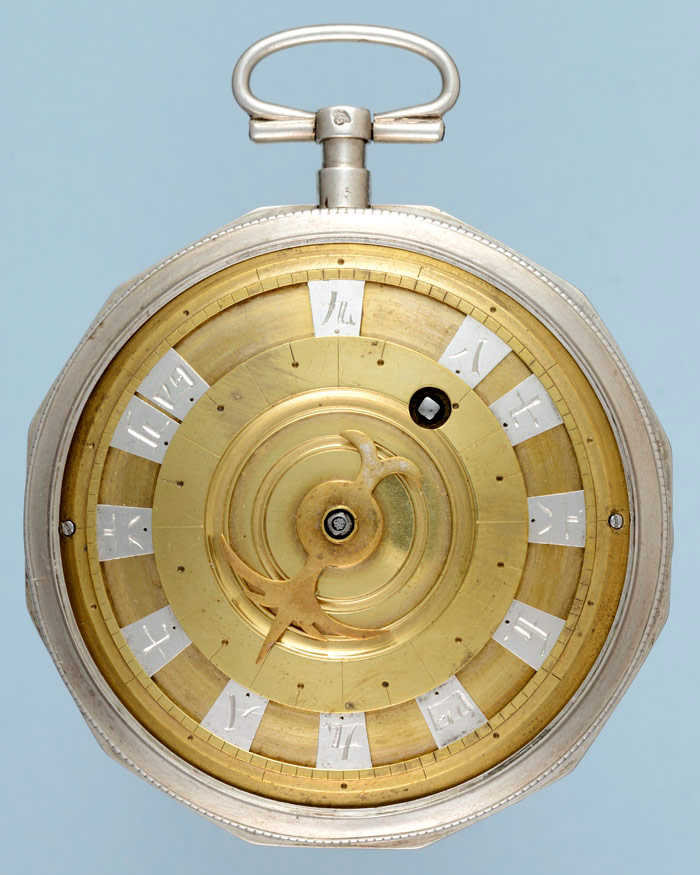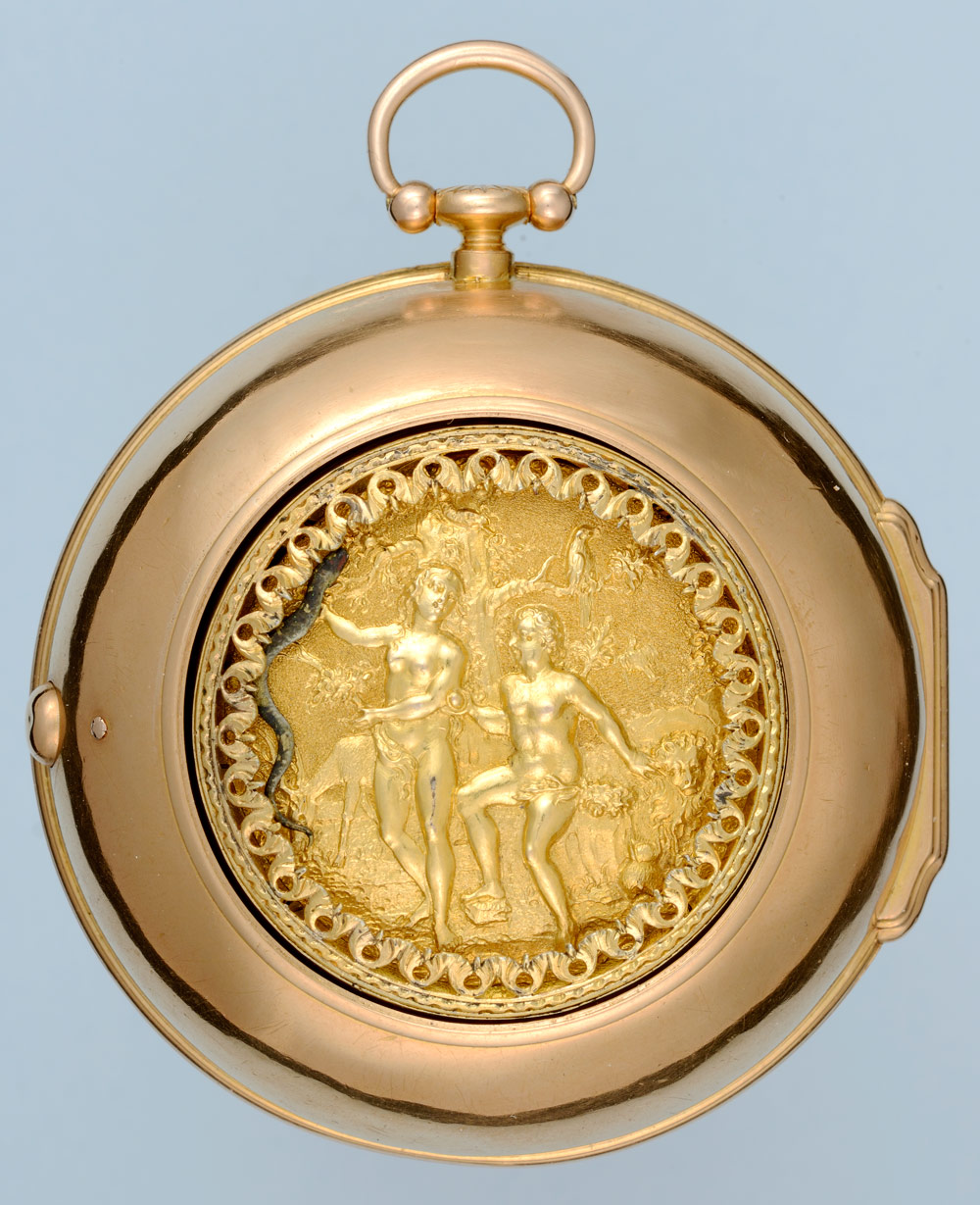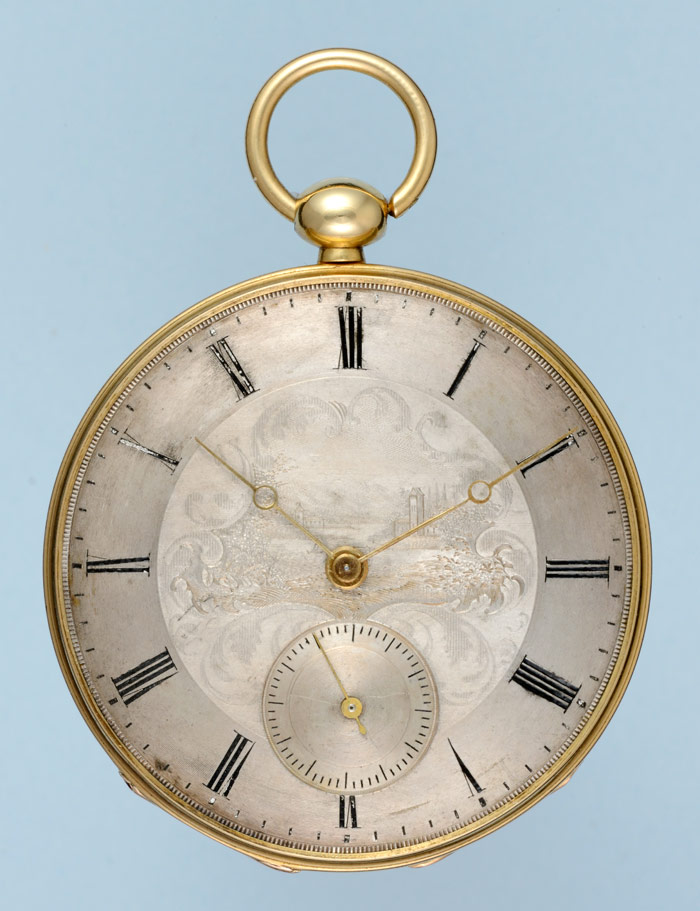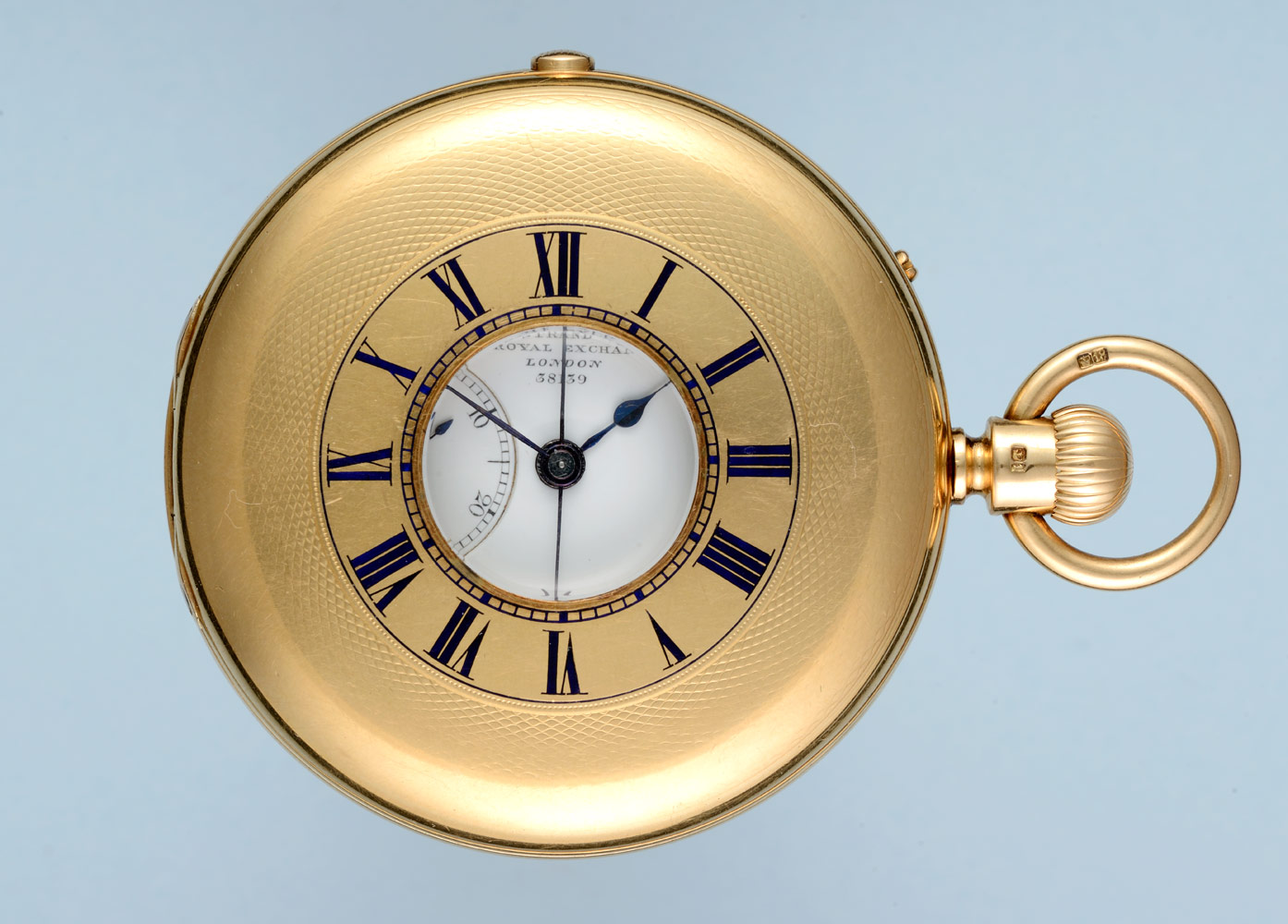A9630
Silver Verge with Japanese Dial
£1,950.00
Circa 1810
An early 19th Century continental verge with rare Japanese dial in a silver open face case.
Diameter 53 mm Depth 12 mm
Out of stock
Description
An early 19th Century continental verge with rare Japanese dial in a silver open face case. Full plate gilt fusee movement. Finely pierced and engraved bridge cock with steel coqueret, plain three arm gilt balance with blue steel spiral hairspring. Silver regulator dial with polished steel indicator. Pentagonal baluster pillars. Rare gilt dial with twelve engraved adjustable rectangular markers for the hours, engraved markings at the edge of ten sections, each divided into ten. Broad single decorative gilt hand. Plain silver open face case, twelve sided front bezel.
A form of dial very rarely found on a watch. This one may have been influenced by the revolutionary method of dividing the hours into a hundred divisions. The Japanese method of telling the time originated in China and was based on the natural day from dawn to dusk. Day and night were each divided into six segments of differing length. The day segments, for example, were longer in summer and shorter in winter. For this reason the hour markers had to be adjustable. The dial begins with the number “9” and goes backwards 9,8,7,6,5,4, because the Japanese considered that 9 was a magic number. It was desirable to have the mystical number present in every hour, as well as to directly attribute it to midnight and noon. The other hours were multiplied by the number 9 and the second digit of the product was taken as the clock hour for example, hour 2 was in fact 8 because 2 x 9 = 18. Traditional Japanese hours were named after the Chinese zodiacal signs, midnight bottom of the dial being “rat”, midday top of the dial “horse”, sunrise to the left “hare”, sunset to the right “cock”, and so on








